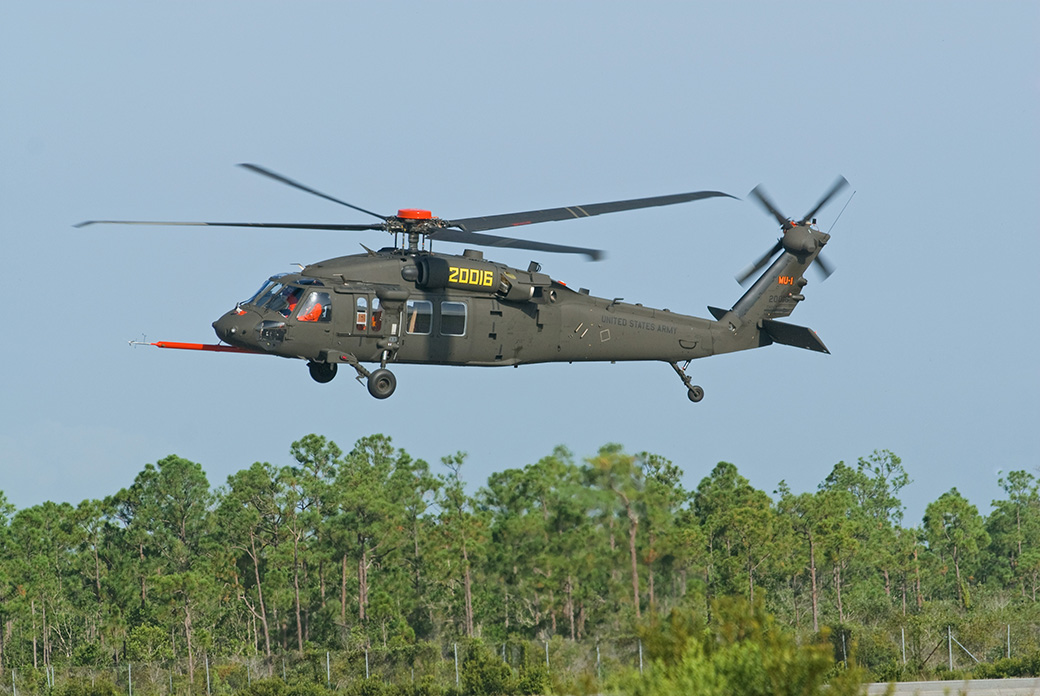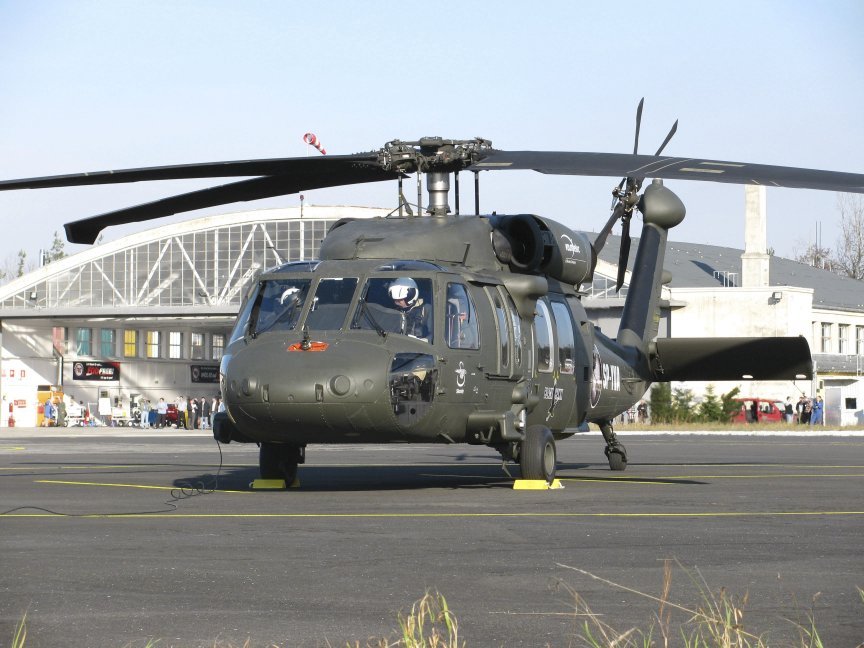Inside the Sikorsky S 70: What Sets This Helicopter Apart from Its Competitors
Inside the Sikorsky S 70: What Sets This Helicopter Apart from Its Competitors
Blog Article
High-Performance Multi-Role Rotorcraft Featuring Advanced Cockpit Technologies and Integrated Sensing Unit Equipments
The realm of rotorcraft innovation has actually seen remarkable developments in current times, especially in the world of high-performance multi-role rotorcraft equipped with cutting-edge cabin technologies and seamlessly incorporated sensing unit systems. These developments have not just boosted the functional capabilities of rotorcraft however have also substantially affected modern-day aviation procedures on various fronts. From boosted mission versatility to improved functional effectiveness, the merging of sophisticated cockpit modern technologies and integrated sensor systems has actually ushered in a brand-new age of opportunities for rotorcraft applications. In the complying with conversation, we will certainly check out the advancement of rotorcraft technology, explore the world of advanced cabin developments, and analyze the effects of incorporated sensor systems on the operational convenience and efficiency of modern-day rotorcraft.
Development of Rotorcraft Modern Technology
The development of rotorcraft modern technology has actually been noted by significant improvements in the rules of aerodynamics, materials, and propulsion systems, forming the capabilities and performance of modern-day rotorcraft. Wind resistant enhancements have actually boosted the efficiency and ability to move of rotorcraft, permitting boosted speed, dexterity, and security throughout flight (sikorsky s 70). Advancements in products, such as the use of composite products and advanced alloys, have actually caused lighter yet stronger rotorcraft structures, improving total efficiency and sturdiness. Additionally, improvements in propulsion systems, including much more powerful engines and ingenious propulsion technologies, have enabled rotorcraft to achieve higher altitudes, faster speeds, and greater hauls.
These developments have not only transformed the capacities of rotorcraft yet have actually likewise expanded their applications across numerous sectors, consisting of armed forces, commercial, and emergency situation services. The constant evolution of rotorcraft technology proceeds to drive advancement in the area, pushing the boundaries of what is feasible and shaping the future of upright trip.
Advanced Cockpit Innovations
Structure upon the foundational advancements in the rules of aerodynamics, materials, and propulsion systems, the world of rotorcraft technology currently moves focus in the direction of introducing Advanced Cabin Innovations. The integration of cutting-edge modern technologies within the cockpit setting plays a critical function in improving the operational capabilities, security, and efficiency of modern rotorcraft. sikorsky s 70. Advanced Cabin Innovations encompass a vast array of attributes created to provide pilots with improved situational recognition, structured information monitoring, and intuitive control interfaces
One of the vital improvements in cockpit style is the execution of glass cockpits, which change typical analog evaluates with high-resolution displays. These digital systems supply customizable formats, real-time information assimilation, and improved readability, allowing pilots to access crucial info at a look. Advanced avionics systems, such as fly-by-wire controls and increased fact displays, are transforming just how pilots communicate with the aircraft, enabling for exact control and improved decision-making abilities.


Incorporating advanced cabin advancements not only boosts pilot efficiency but additionally adds to general objective effectiveness and safety and security in complicated operational settings. By leveraging advanced innovations within the cabin, rotorcraft producers are setting new criteria for operational quality and mission success.
Integrated Sensing Unit Systems
With the advancement of rotorcraft innovation, the integration of sophisticated Integrated Sensor Equipment has actually ended up being vital in improving functional effectiveness try this out and security. These Integrated Sensor Solutions encompass a vast variety of innovations that provide critical information for various features such as navigation, security, targeting, and environmental tracking. By perfectly integrating sensing units like radars, electronic cameras, lidar, and infrared systems right into rotorcraft, drivers can benefit from boosted situational understanding, boosted objective abilities, and lowered pilot workload.
One key advantage of Integrated Sensor Solutions is their capacity to collect real-time information and provide actionable understandings to pilots and goal operators. Advanced radar systems can find and track targets over long ranges, permitting for early risk discovery and reliable feedback planning. Additionally, integrating infrared and electro-optical video cameras makes it possible for rotorcraft to perform reconnaissance and surveillance objectives with accuracy and accuracy.
Essentially, the assimilation of advanced sensor innovations right into rotorcraft not just boosts functional performance but additionally adds significantly to overall mission success and crew security. As rotorcraft continue to develop, the function of Integrated Sensor Systems will most certainly continue to be at the center of innovation in the aerospace sector.
Functional Adaptability and Performance
Enhancing operational flexibility and effectiveness in rotorcraft is a natural development from the integration of advanced Integrated Sensing unit Equipments. By leveraging the information and understandings given by these innovative sensing unit systems, rotorcraft can maximize their performance across numerous missions and environments.
Operational convenience includes the ability of rotorcraft to adapt to different duties and scenarios successfully. With advanced cabin modern technologies and integrated sensing unit systems, rotorcraft can perfectly shift in between jobs such as search and rescue, medical discharge, monitoring, and much more. This versatility improves the rotorcraft's capability to satisfy diverse operational demands without requiring considerable reconfiguration.
Effectiveness in rotorcraft procedures is vital for making the most of goal effectiveness and resource application. Integrated sensor systems play an essential duty in enhancing functional performance by providing real-time data on weather, surface mapping, target tracking, and much more. This information enables pilots to make educated choices swiftly, enhance trip courses, conserve fuel, and improve general goal performance.
Effect On Modern Air Travel Workflow

In addition, the combination of advanced sensing units helps with boosted objective preparation and execution, making it possible for rotorcraft to do a large range of tasks with improved precision. From search and rescue operations to airborne firefighting and legislation enforcement goals, the capabilities of modern-day rotorcraft equipped with sophisticated cabin technologies and incorporated sensor systems are unmatched.
Furthermore, the effect of these advancements prolongs past functional efficiency to cost-effectiveness and sustainability. By enhancing trip routes, gas consumption, and maintenance timetables, high-performance rotorcraft equipped with sophisticated cabin modern technologies and sensors add to lowering functional costs and environmental effect, making them important properties in modern aviation operations.
Final Thought
In verdict, the high-performance multi-role rotorcraft with advanced cockpit technologies and integrated sensor systems represents a considerable advancement in aeronautics technology. These developments improve functional adaptability and effectiveness, ultimately impacting contemporary air travel operations in a positive method. The combination of these sophisticated innovations permits enhanced abilities and efficiency in different objective scenarios, showcasing the continued development of rotorcraft innovation in the air travel market.
The realm of rotorcraft innovation has seen noteworthy developments in recent times, particularly in the realm of high-performance multi-role rotorcraft geared up with innovative cockpit modern technologies and seamlessly integrated sensor systems. From enhanced objective flexibility to enhanced operational efficiency, the convergence of innovative cabin modern technologies and integrated sensing unit systems has actually ushered in a new period of possibilities for rotorcraft applications. In the complying with discussion, we will certainly check out the evolution of rotorcraft technology, dive into the world of sophisticated cockpit technologies, and take a look at the ramifications of integrated sensing unit systems on the functional versatility and performance of contemporary rotorcraft.

Report this page